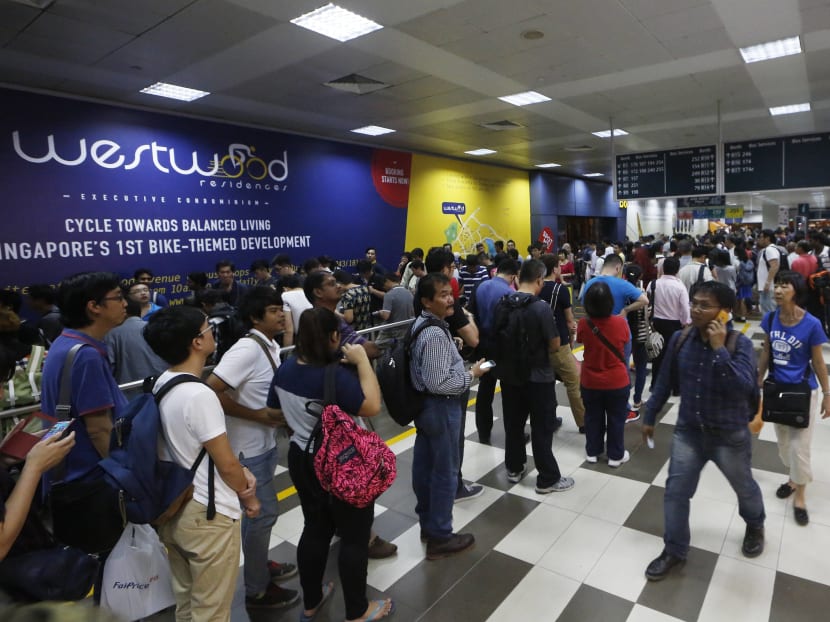Contingency plans for handling train disruptions ‘improved’
SINGAPORE — The contingency plans to manage the fallout from last month’s massive train disruption were “not adequate”, and the authorities have worked with the public transport operators to improve their response in future emergencies.

A long queue of commuters formed at Boon Lay Bus Interchange after train services on the North-South and East-West Lines were disrupted due to a power fault on July 7, 2015. TODAY file photo
SINGAPORE — The contingency plans to manage the fallout from last month’s massive train disruption were “not adequate”, and the authorities have worked with the public transport operators to improve their response in future emergencies.
From now on, the capacity of regular trunk bus services calling at affected MRT stations connecting the city and the heartlands will be ramped up during train service disruptions. Buses will be diverted from other bus services with lower demand to help ease the crunch depending on the scale of the disruption, and the operating hours of the government-contracted City Direct Services could also be extended, said Senior Minister of State (Transport and Finance) Josephine Teo in Parliament today (Aug 17).
For large-scale disruptions where bus bridging “cannot be effectively implemented at all stations”, a special bridging plan will be implemented to serve commuters living in major towns in the northern, western and eastern parts of the island.
Commuters in the city will be able to travel on alternative MRT lines to key interchange stations such as Bishan, Paya Lebar and Buona Vista, and then take special bridging buses to travel on to towns such as Ang Mo Kio, Woodlands, Tampines and Choa Chu Kang. Such a service would also work in the reverse direction.
This improved contingency plan was put into place recently, said Mrs Teo, who was responding to a question tabled by Member of Parliament Lim Biow Chuan (Mountbatten) on whether the Land Transport Authority (LTA) has reviewed and approved the contingency plans by SMRT to provide alternative transport in case of breakdowns.
The breakdown on July 7 brought services to a halt on the North-South and East-West lines, leaving some 250,000 commuters stranded islandwide. Today, Mrs Teo acknowledged that the rail operators’ Rail Incident Management Plans, which are approved and regularly reviewed and enhanced by the LTA, were “not adequate”.
“It is understandable why many affected commuters were unhappy with the management of the incident,” she said. “The capacity of alternative travel connections between the heartlands and the city needed considerable strengthening, and would have required significantly more resources beyond SMRT’s to mitigate the impact.”
When asked by Mr Lim whether the Ministry of Transport conducts its own practice runs and has contingency plans for such situations, Mrs Teo said while exercises are conducted regularly for land, air and sea transport, there is “nothing quite like the real thing”.
For instance, commuters reactions are “not entirely predictable” and their patterns of travel were “not entirely” as what was expected. “So this is one of those examples which happen that tested the strength of our plan,” said Mrs Teo.
After the July 7 incident, the authorities “wasted no time” in looking into how commuters make onward travel connections she said, adding they could “do much better”.
Mr Zaqy Mohamad (Chua Chu Kang GRC) asked if the authorities are prepared to coordinate with other bus operators beyond SBS Transit and SMRT under the Bus Contracting Model — which could see more private operators appointed to operate public bus routes — when a breakdown happens in future.
In response, Mrs Teo said: “There are provisions for the resources available to these government contracted operators, and they can also be brought (back) in an incident of this nature.”






